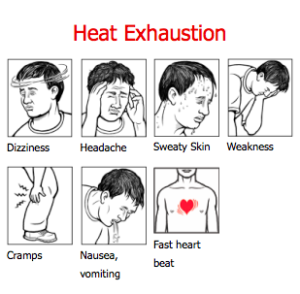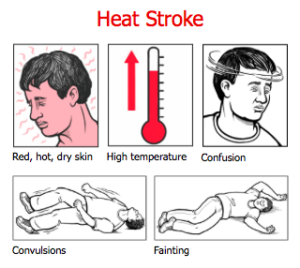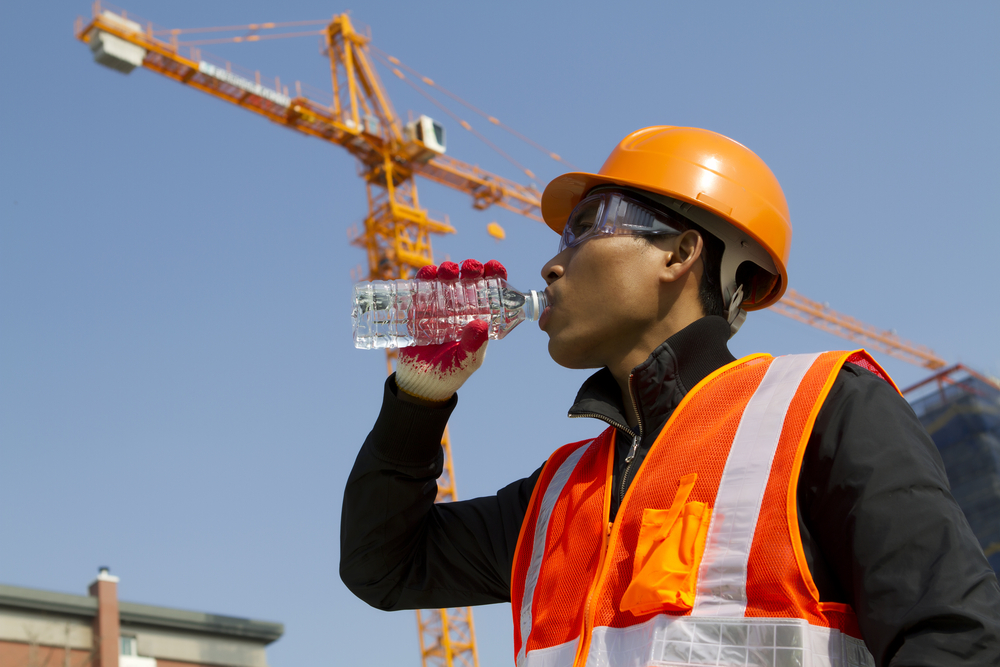A healthy body temperature is maintained by the nervous system . As the body temperature increases, the body tries to maintain its normal temperature by transferring heat. Sweating and blood flow to the skin (thermoregulation) help us keep our bodies cool. A heat-related illness occurs when our bodies can no longer transfer enough heat to keep us cool.
A high body temperature (hyperthermia) can develop rapidly in extremely hot environments, such as when a child is left in a car in the summer heat. Hot temperatures can also build up in small spaces where the ventilation is poor, such as attics or boiler rooms. People working in these environments may quickly develop hyperthermia.
High temperature caused by a fever is different from a high body temperature caused by a heat-related illness. A fever is the body’s normal reaction to infection and other conditions, both minor and serious. Heat-related illnesses produce a high body temperature because the body cannot transfer heat effectively or because external heat gain is excessive.
Heat-related illnesses include:


The following tips may help prevent a heat-related illness. Be aware of the symptoms of heat-related illnesses and the warning signs of dehydration.
- Wear a Hard Hat Liner. The hard hat liner will protect your head from the sun’s rays hitting the hat. Having an HP-LINER thermal barrier is key to keeping temperatures down inside the hard hat.Providing protection from the heat inside the hard hat is an easy and inexpensive way to minimize heat-related illnesses and keep employees safe. HP LINER is made to be inserted into the Hard Hat. It shields the user from extreme temperatures
- Practice heat safety measures when you are physically active in hot weather. This is especially important for outdoor workers and military personnel. Avoid strenuous activity in hot, humid weather or during the hottest part of the day (between 10 a.m. and 4 p.m.). Use caution during your physical activity in the heat if you have health risks.
- Drink plenty of water before, during, and after you are active. This is very important when it’s hot out and when you do intense exercise. Fluids such as rehydration drinks, juices, or water help replace lost fluids, especially if you sweat a lot.
- Drink on schedule. Two hours before exercising, drink 24 fl oz (750 mL) of fluid. Drink 16 fl oz (500 mL) of fluid 15 minutes before exercising. Continue drinking 8 fl oz (250 mL) of fluid every 15 minutes while exercising.
- Drink rehydration drinks, which are absorbed as quickly as water but also replace sugar, sodium, and other nutrients. Eat fruits and vegetables to replace nutrients.
- Check your urine. Urine should be clear to pale yellow, and there should be a large amount if you are drinking adequately. You should urinate every 2 to 4 hours during an activity when you are staying properly hydrated. If your urine output decreases, drink more fluids.
- Do not spend much time in the sun. If possible, exercise or work outside during the cooler times of the day. Wear lightweight, light-colored, loose-fitting clothing in hot weather, so your skin can cool through evaporation. Wear a wide-brimmed hat or use an umbrella for shade.
- Stay cool as much as possible. Take frequent breaks in the shade, by a fan, or in air-conditioning. Cool your skin by spraying water over your body. Take a cool bath or shower 1 or 2 times a day in hot weather.
- If you have to stand for any length of time in a hot environment, flex your leg muscles often. This prevents blood from pooling in your lower legs, which can lead to fainting. To prevent swelling (heat edema), wear support hose to stimulate circulation while standing for long periods of time.
- Do not drink alcohol. It increases blood flow to the skin and increases your risk of dehydration.

